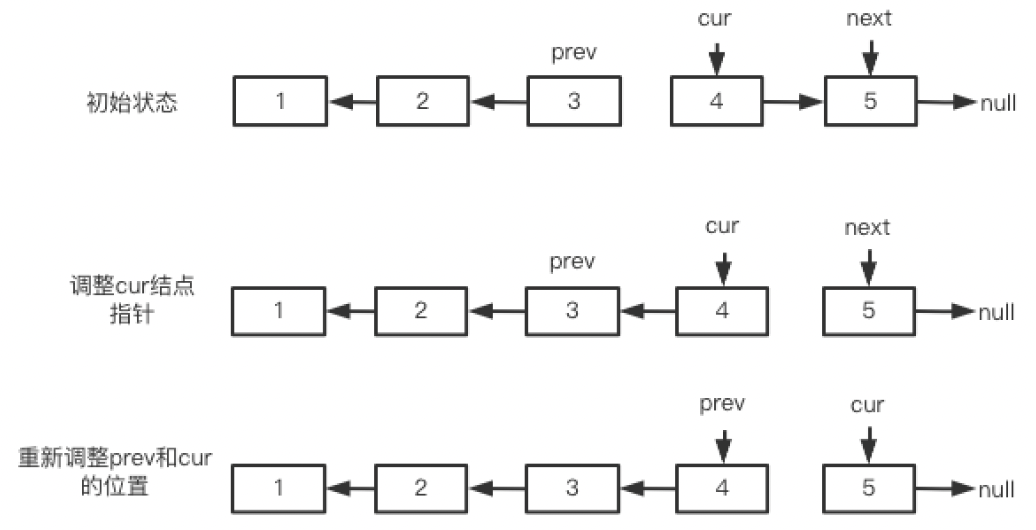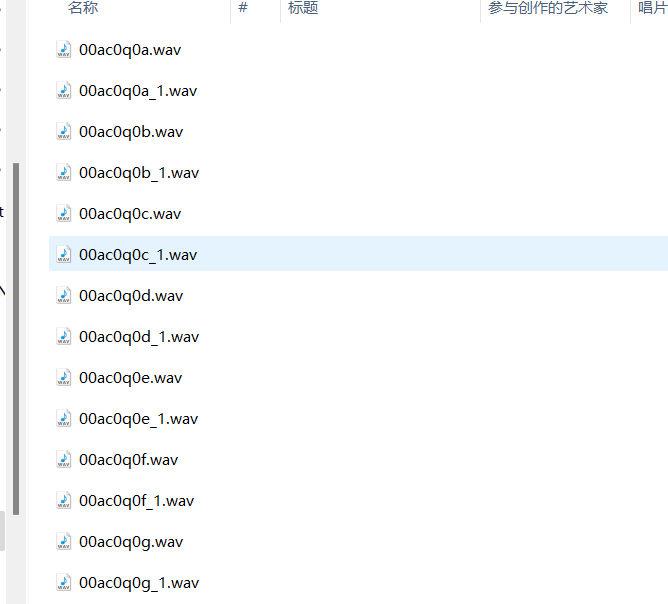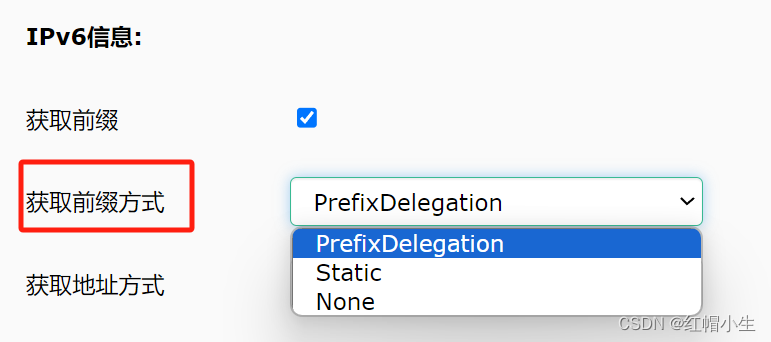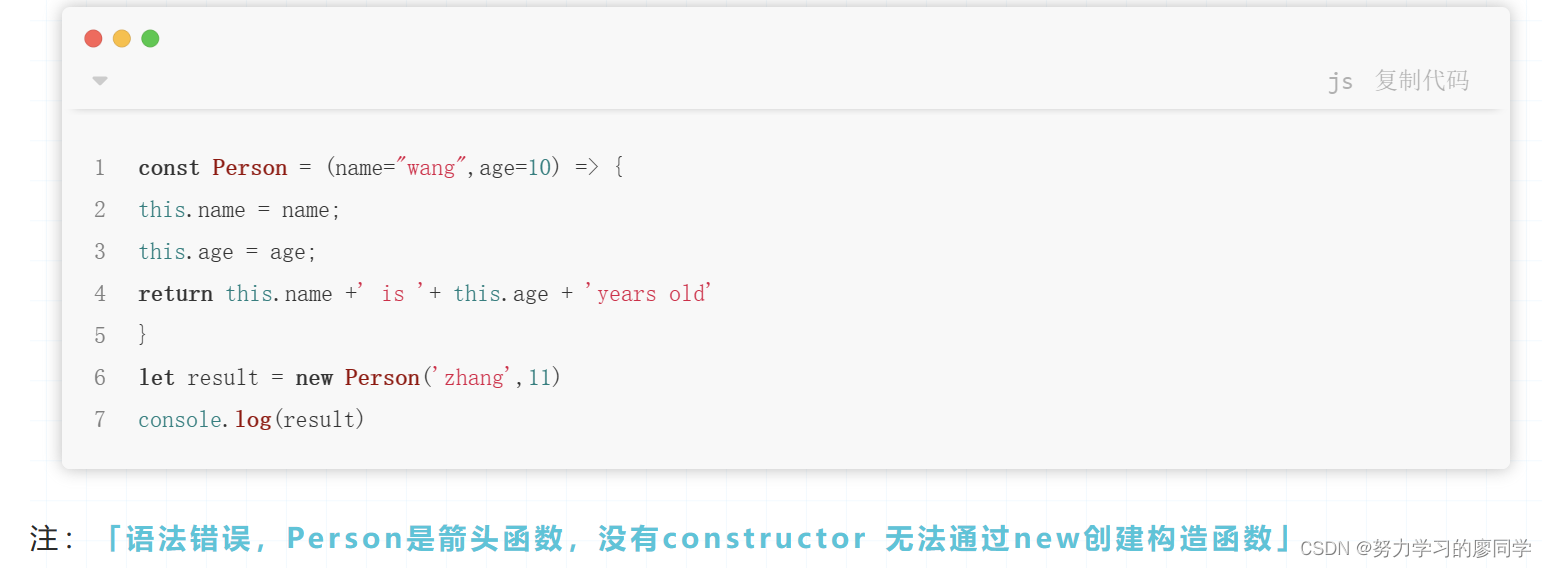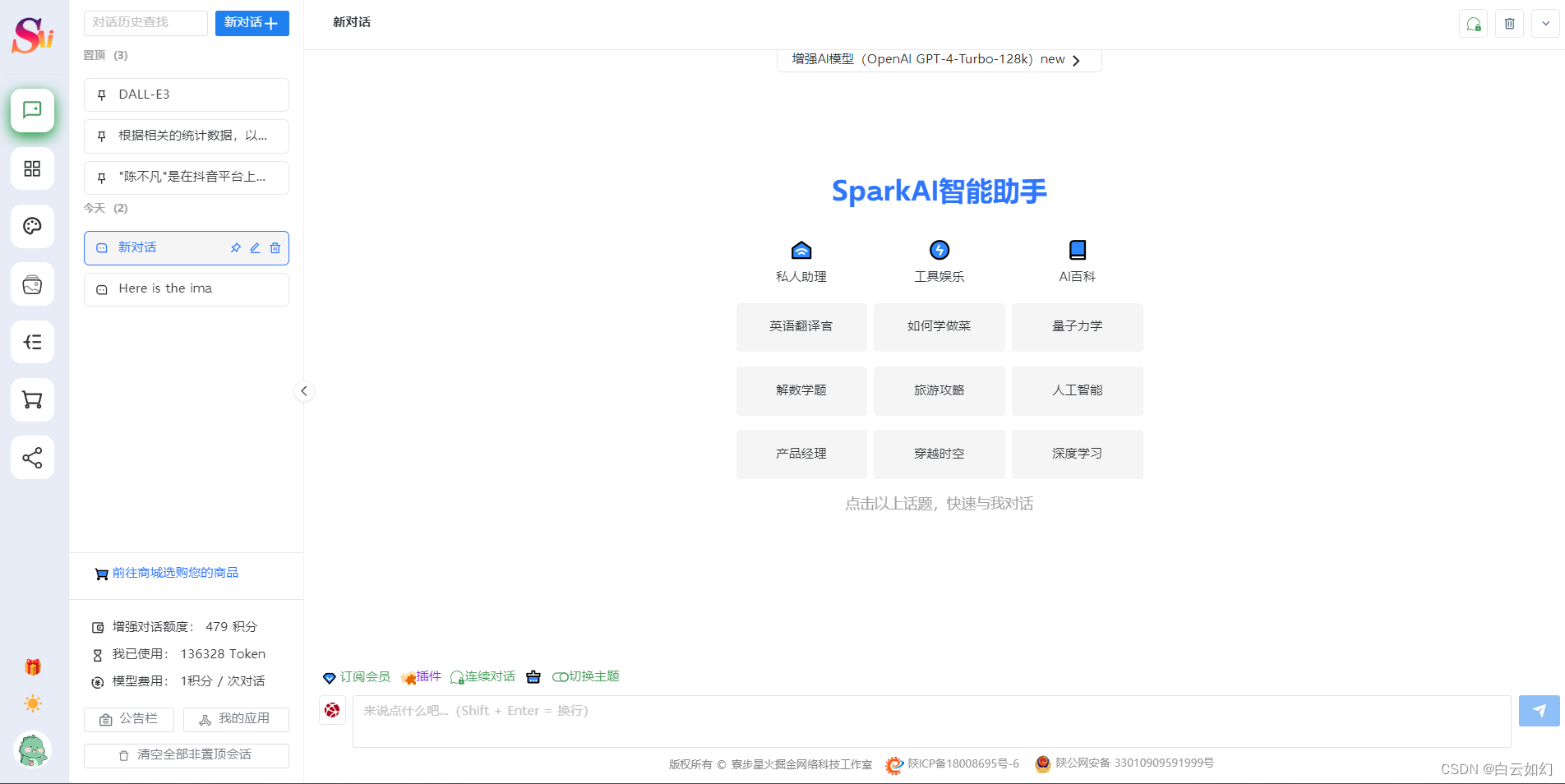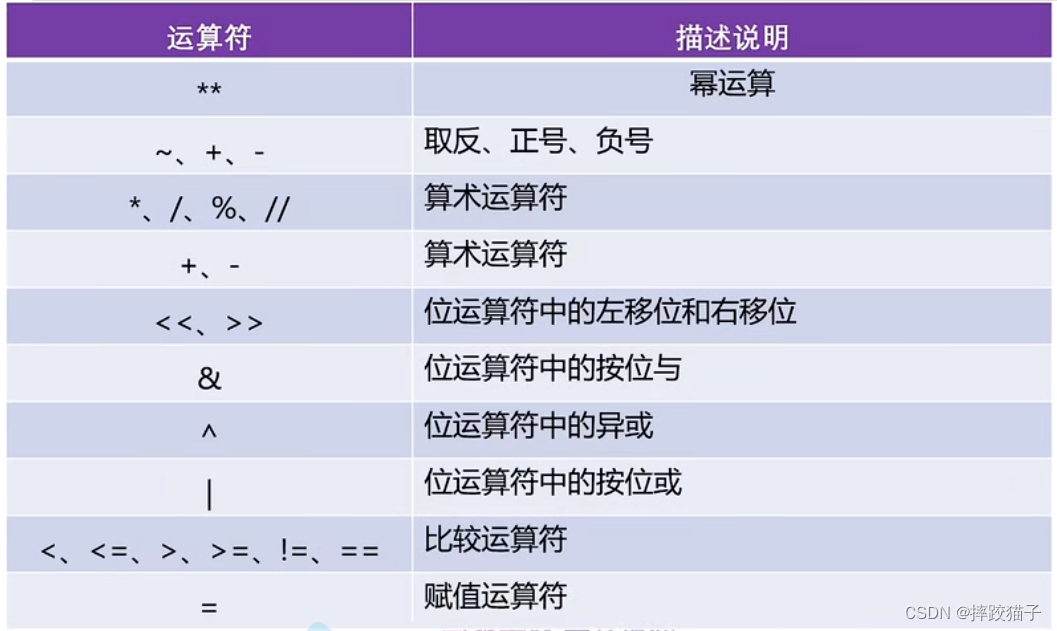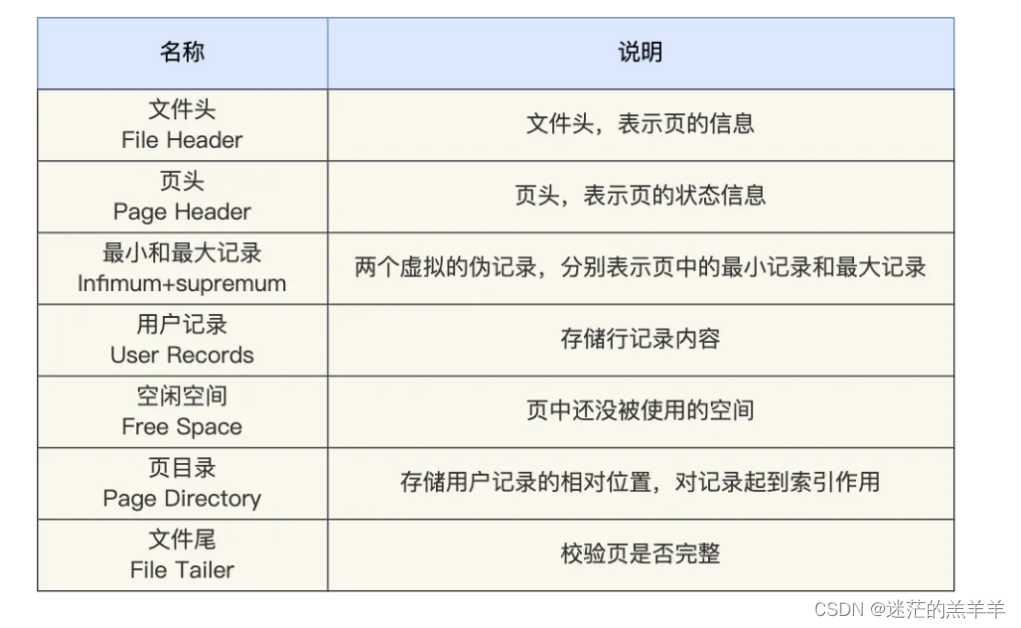链表反转的三种方式
一、建立虚拟头结点辅助反转
为了方便反转,可以创建一个ans结点,让ans.next = head,然后后面的结点一次插入到ans.next
在下图中,对(1->2->3->4->5)进行反转,可以创建ans,让ans.next = node(1),然后依次把2,3,4,5结点插入到ans后面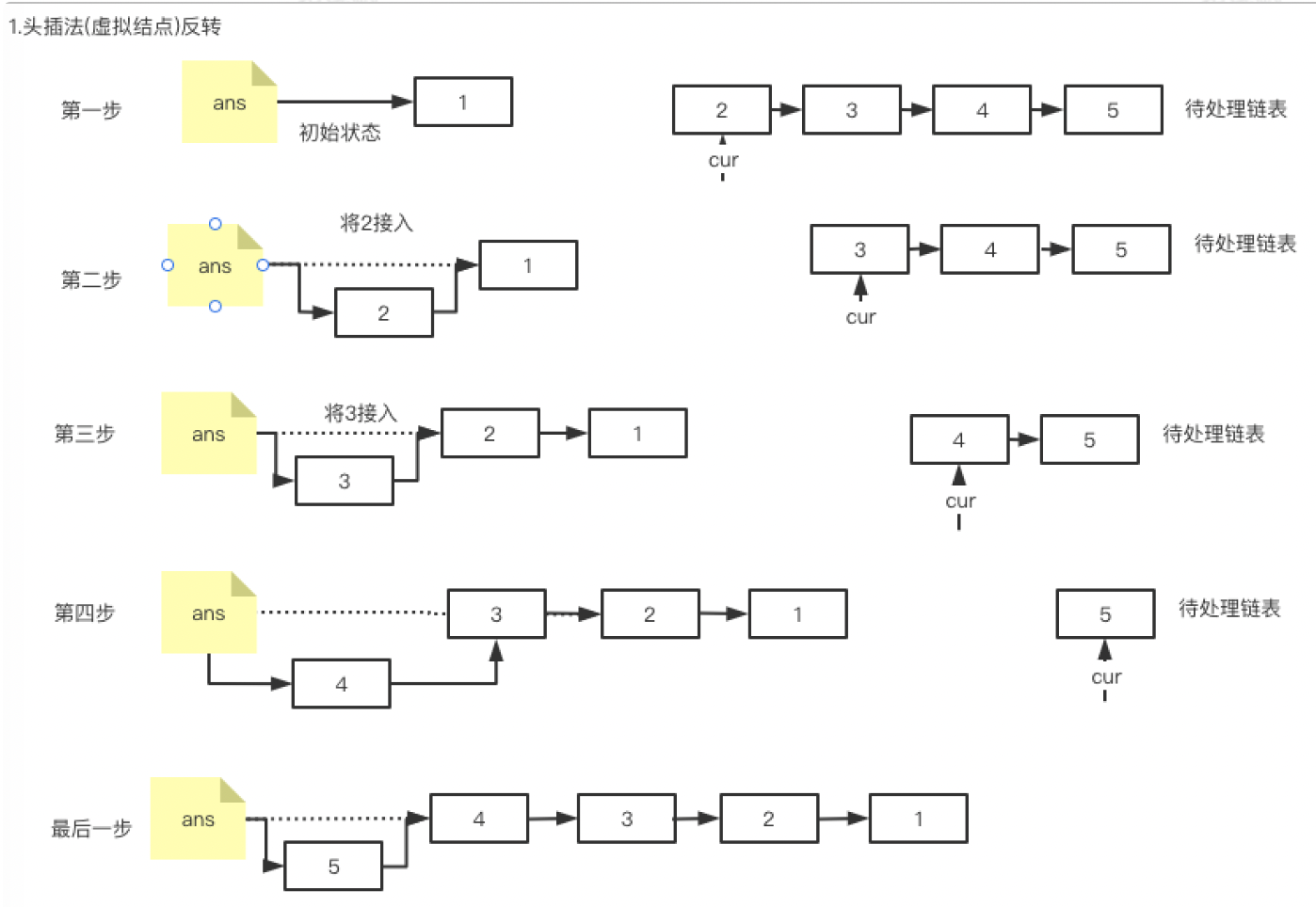
//方法1:虚拟结点法
public static ListNode reverseList(ListNode head){
ListNode ans new ListNode(-1);
ListNode cur head;
while(cur != null){
ListNode next = cur.next;
cur.next = ans.next;
ans.next = cur;
cur = next;
}
return ans.next;
}
二、直接操作链表实现反转
有时候面试官会让你使用难度更高一些的,不借助虚拟结点的方式来反转链表
观察反转前后的指针指向,思考如何进行反转
在初始状态中,cur指向的是旧链表的头结点,prev指向新链表的头结点,next指向下一个要调整的结点。在变化过程中,cur结点会转移到新结点中,然后prev指到cur到结点,cur指到next的结点。
核心代码如下:
ListNode next = curr.next;
curr.next = prev;
prev = curr;
curr = next;
public ListNode reverseList(ListNode head){
ListNode prev = null;
ListNode curr = head;
while(curr != null){
ListNode next = curr.next;
curr.next = prev;
prev = curr;
curr = next;
}
return prev;
)
三、拓展(递归)
还不太懂递归的写法,等以后学得深了再看看。
public ListNode reverseList(ListNode head){
if (head = null || head.next = null) return head;
ListNode newHead = reverseList(head.next);
head.next.next = head;
head.next = null;
return newHead;
}

